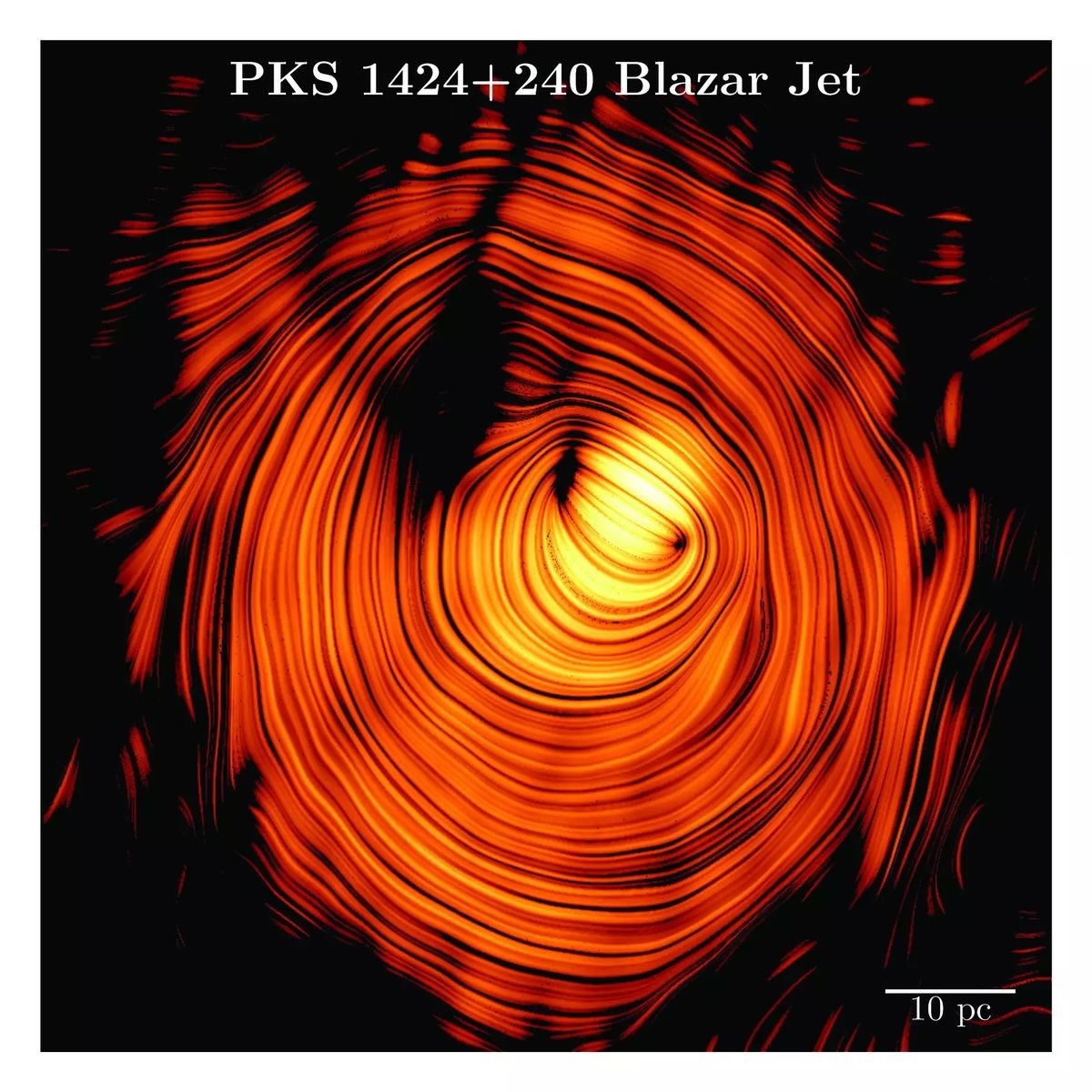13.08.2025
"We have never seen anything quite like it."

The “Eye of Sauron” — a striking image of a plasma jet in the blazar PKS 1424+240, seen head-on. (Image credit: Y.Y. Kovalev et al.)
For about 15 years, a powerful radio telescope on planet Earth dutifully recorded data about a location in the cosmos billions of light-years away from us — and, at last, astronomers managed to stitch together those extensive observations to reveal a full picture of what this telescope has been looking at.
It's … the Eye of Sauron! Well, sort of.
Though the image you're seeing bears a striking resemblance to the jarring symbol associated with the main villain in the Lord of the Rings trilogy of novels by J.R.R. Tolkien, it's actually something far more fear-inducing. At face value, at least.
What you're looking at is actually a blazar, which requires a couple of layers to explain. Out in the universe, there are these things called quasars, which refer to the extremely luminous centers of active galaxies (meaning they emit a lot of electromagnetic radiation) that are powered by supermassive black holes. These galactic cores are called active galactic nuclei, or AGNs; and in fact, the monster black holes powering these phenomena can also funnel matter outward in the form of highly energetic jets of particles moving at nearly the speed of light. It's all very intense. Quasars can be so bright that they outshine the collective light of every single star in the galaxy surrounding them.
Blazars, on the other hand, are pretty much quasars — except with those supermassive-black-hole-rooted jets pointing within 10 degrees of our planet. That doesn't exactly mean we're about to be obliterated by a jet, though. Remember how I said the fear remains at face value? The only reason we're seeing the jet pointing straight toward us is because of our vantage point, and this doesn't necessarily increase its danger. Still, blazars, because of this serendipitous orientation, tend to appear even brighter than the already ridiculously bright quasars. Not that it matters, but Sauron would sure love them.
"When we reconstructed the image, it looked absolutely stunning," Yuri Kovalev, lead author of the study and principal investigator of the Multi-messenger Studies of Extragalactic Super-colliders project at the Max Planck Institute for Radio Astronomy (MPIfR), said in a statement. "We have never seen anything quite like it — a near-perfect toroidal magnetic field with a jet, pointing straight at us."

The image of the 'Eye of Sauron' blazar. (Image credit: Y.Y. Kovalev et al.)
"This alignment causes a boost in brightness by a factor of 30 or more," explains Jack Livingston, a study co-author at MPIfR. "At the same time, the jet appears to move slowly due to projection effects — a classic optical illusion."
And this particular blazar could be the one blazar to rule them all. Scientists have formed a clear image of it using observations from the Very Long Baseline Array (named PKS 1424+240), and it may very well be one of the brightest sources of high-energy gamma rays and cosmic neutrinos ever observed.
Neutrinos are mind-blowing items themselves, while we're at it. They're nicknamed "ghost particles" because they're invisible, zippy bits that penetrate the entirety of our cosmos yet remain tremendously difficult to detect. Trillions of these particles are flowing through your body as you read this, but you can't tell because they don't interact with any of the particles that make up your body. They slide right through.
The IceCube Neutrino Observatory near the South Pole, specifically built to pin down neutrinos, is actually the institution that discovered PKS 1424+240 in the first place because of its super high neutrino emission levels. Solving this puzzle confirms that active galactic nuclei with supermassive black holes are not only powerful accelerators of electrons, but also of protons — the origin of the observed high-energy neutrinos," concludes Kovalev.
Reconstructing the spectacular blazar, according to the discovery team, also allows astronomers to peer directly into the "heart" of this jet — and that could be great news for scientists trying to understand the dynamics of these awesome objects. Kovalev explains that it confirms AGNs with supermassive black holes don't only accelerate electrons (negatively charged particles that make up atoms) but also protons. This is a big find, the researcher explains, because that explains the origin of the high-energy neutrinos PKS 1424+240 appears to be spitting out.
A study about these results was published on Tuesday (Aug. 12) in the journal Astronomy & Astrophysics Letters.
Quelle: SC
